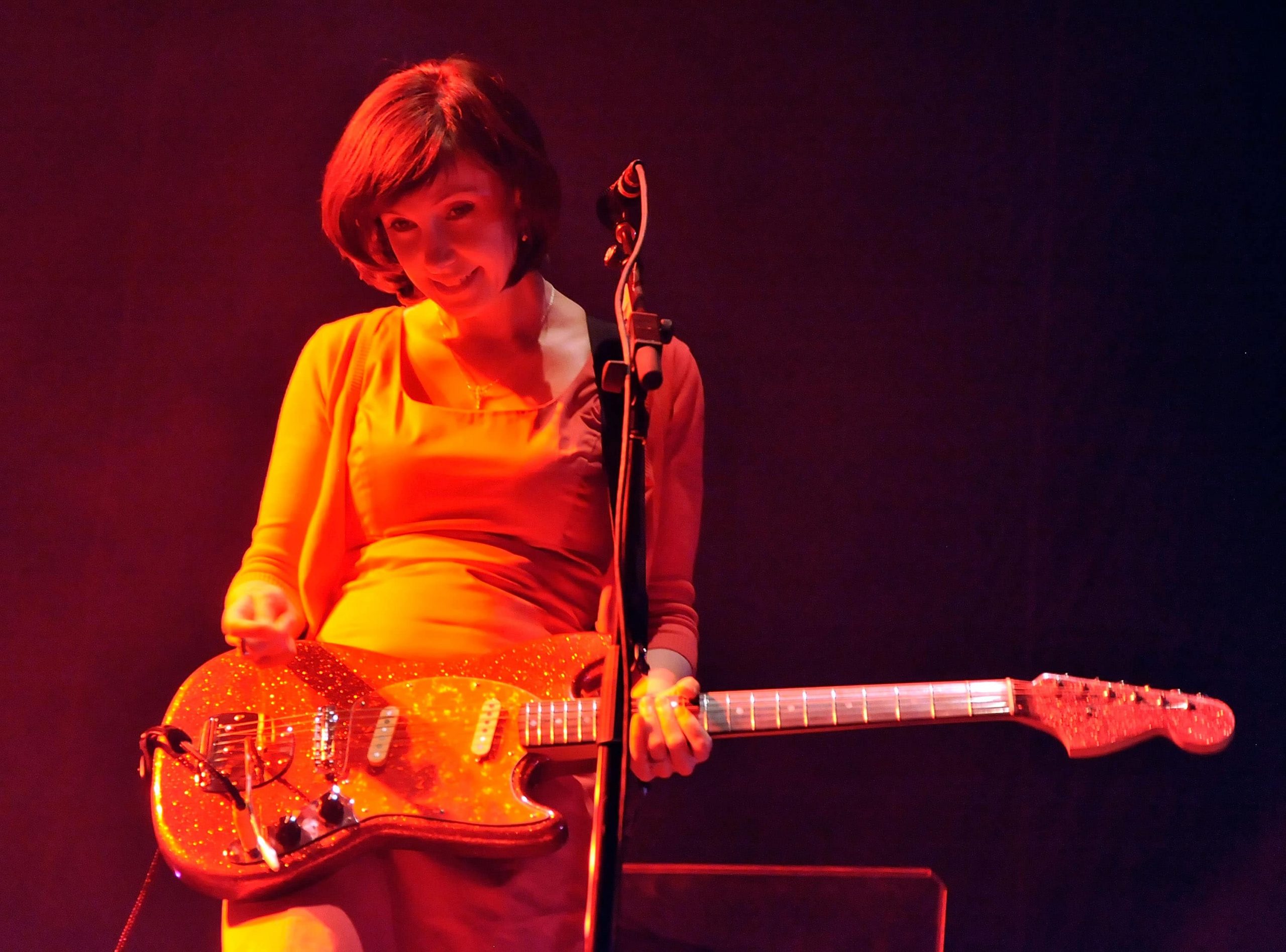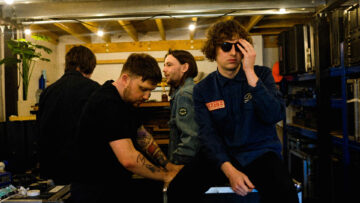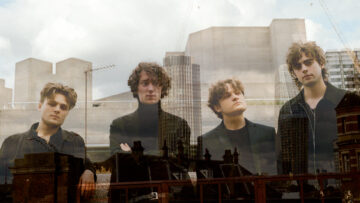
My Bloody Valentine, Slowdive, Ride, and now DIIV. Billy Holmes takes a deep dive into a quintessentially British genre that has moved and hypnotised crowds since the 1990s: shoegaze.

I have to admit, my love affair with shoegaze only dates back to 2017. Cooped up indoors during an unforgiving winter, my friend happened to have a spare ticket to go and see 90’s shoegaze royalty Slowdive in London. I’d barely listened to more than three tracks by the band, but I was keen to experience shoegaze live for the first time ever and see what all the fuss was about. Upon our arrival there was no doubt we were the youngest attendees. We stood motionless in a sea of stern-faced couples predominately wearing black.
Reunion gigs always have a peculiar atmosphere. The now-middle-aged hardcore fans and scenesters reunited en mass to relive their youth (minus the substance abuse). Whilst the fans have matured, they still bullishly attempted to outdo each other as if nothing had changed since the 90’s, eyeing each other up to try and provoke a reaction. I felt as if I was undercover, my age invisible to a crowd of experienced gazers. Suddenly the lights dimmed and Slowdive politely took to the stage…
ArrayNeil Halstead of Slowdive performs onstage during day 1 of FYF Fest 2017 in Los Angeles, California. (Photo by Timothy Norris/Getty Images for FYF)
From the first song to the last I was transported into an unfamiliar sonic vortex, stunned into a state of audio appreciation that took weeks to eventually shake off. It’s entirely rare for me to experience live music in this way – yes, it’s happened before but not often and when it does, it changes me. The elegant subtleties and soul shaking drones of Slowdive were new to me, a full-bodied sound that I hadn’t encountered before left me feeling me dizzily elevated. Upon my return home I put on my headphones and listened to hours upon hours of shoegaze, realising a majority of modern bands I listened to owed everything to the foundations of the genre. For those of you asking why it’s called shoegaze, well, you have NME to thank for that. It was appropriately named after the act of gazing upon the sheer mass of pedals that the guitarists would use during recording.
It’s entirely rare for me to experience live music in this way – yes, it’s happened before but not often and when it does, it changes me.
Allow me to set the scene: it’s 1988 and My Bloody Valentine have just released their debut album Isn’t Anything, meanwhile the likes of Rick Astley and Bananarama are dominating the UK pop charts. Released by Creation Records, this pioneering album unbeknownst to My Bloody Valentine establishes the distinctive constructs of shoegaze: heavilyy distorted guitars and ethereal melodies hypnotically matched with waves of enchanting feedback, resulting in a wholly new sound. It’s problematic to say this album was the first example of shoegaze, as it was a genre like any other that developed gradually over time, drawing influence from the likes London duo A.R Kane, Cocteau Twins and cult American collective Dinosaur Jr. To say that this record inspired the first wave of shoegaze is an understatement, there was and still is such an alluring romance and power behind tracks such as ‘Several Girls Galore’ and ‘Nothing Much To Lose’.

Musician Bilinda Butcher of My Bloody Valentine performs during day three of the Coachella Valley Music & Arts Festival 2009 held at the Empire Polo Club on April 19, 2009 in Indio, California. (Photo by Kevin Winter/Getty Images)
With the 80’s being indefinitely left behind in the past, British bands soon caught on to this compelling sound and understated aesthetic that was more often than not combined with an introvert attitude. The early 90’s soon became populated with a roster of incredible shoegaze bands such as Chapterhouse, Lush, and Oxford’s best export Ride. There was something so starkly British about the beginnings of Shoegaze. The bands presented themselves as normal people pushing ego to side to one side to allow for a focus on the music. This Britishness seemed to not just come from the capital but mostly from the Thames Valley area. Slowdive, Chapterhouse and personal favourite Swervedriver were all birthed from the infamous Thames Valley Scene. Let’s face it, areas in the Thames Valley don’t exactly have a cool reputation, but during the 90’s Oxford, Reading and Slough were home to some of the most important gigs within the genre. The idea that the music was created in such banal settings adds to this romanticism that surrounded the movement and created an escape for grungy teen fringe flickers.

Musician Jim Reid of The Jesus and Mary Chain and actress Scarlett Johansson perform during day 1 of the Coachella Music Festival held at the Empire Polo Field on April 27, 2007 in Indio, California. (Photo by Kevin Winter/Getty Images)
As the genre diversified, the discussion over whether the term ‘shoegaze’ was an appropriate name was frequently debated. Lush lead singer Miki Berenyi famously claimed it was ‘generic’ and a ‘slag-off’ term, whilst others believe it to be rather complimentary. With each band adopting their own ‘thing’, whether that was a more post-goth aesthetic or a louder sound, it soon became obvious that it wasn’t a male-dominated genre. Being female was not a gimmick but became natural part of shoegaze. Bands such as Ozean, Swirlies, Slowdive and Lush were just a few of the notable bands with female lead singers and musicians. There was something so necessary about female vocals amongst the drones and drives from the guitars, the beautiful delicacy of these female harmonies were concurrently adopted by the males within the scene. British shoegaze was a ridiculously tight knit community, everyone knew everyone and then before they knew it their sound had gone global, and oh how America loved it.
The gloomy emotion tied to shoegaze was completely lost in translation and the Americans somehow managed to spin the genre into a more summery state.
With the sound being widely adored in America, bands popped up in early 90’s from Boston to Maryland, with noteworthy acts including Velocity Girl, Swirlies and Bowery Electric. However, the gloomy emotion tied to shoegaze was completely lost in translation and the Americans somehow managed to spin the genre into a more summery state. This is not entirely true right across the board, there were exceptions – Bowery Electric convincingly captured the feel and sound, combining a more electric approach to the genre. Their first two albums Bowery Electric and Beat go above and beyond what shoegaze could have ever dreamt of becoming.

Rachel Goswell of Slowdive performs onstage during day 1 of FYF Fest 2017 on July 21, 2017 at Exposition Park in Los Angeles, California. (Photo by Timothy Norris/Getty Images for FYF)
Eventually the distinctive quirks of the genre were dissolved by the Americans and inspired a whole new generation of late 90’s dreamy indie across the country. Meanwhile in England, shoegaze was desperately fizzling out. The beast that was Britpop was boisterously taking over as it offered an easier listen for the masses. From around 1997 the dreamy delays of Shoegaze quietly lay dormant. Many of the British bands felt tired from the demands of their record labels and disbanded. As the movement was primarily focused on going against the grain of current popular music, many felt powerless as Britpop stumbled into the mainstream.
Once the original bands had stopped making music shoegaze went on to inspire musicians and maintain a legacy that will never be forgotten. From it sprang dreampop, newgaze and blackgaze. It never truly died though, welcoming a recent revival around the world, the heavy guitars and washed out vocals once again returning but for Generation Z this time. For me the poster child of this revival is Brooklyn-born DIIV, a band sadly rife with addiction problems who put out three mind-blowing albums. Their first, Oshin, I believe to be one of the most significant albums of the last decade. DIIV capture the darker essence that was present during the birth of 90’s shoegaze. Deeply meditative, the sound is expansive and intelligent. Other modern ‘gaze bands that would be rude not to mention are Horse Jumper of Love, Midwife and Miserable. Whilst there are hundreds more I find it rather ironic that there are now more shoegaze bands than there were during the short lived golden age. Although the majority of these bands are American, British acts such as Leave the Planet, Cheatahs and Ninth Paradise continue to replicate the dreamy and woozy soundscapes that once filled our sweaty venues.

LOS ANGELES, CA – AUGUST 27: Musician Andrew Bailey of DIIV performs onstage during FYF Fest 2016 at Los Angeles Sports Arena on August 27, 2016 in Los Angeles, California. (Photo by Kevin Winter/Getty Images for FYF)
With this modern revival came the second coming of the giants of shoegaze. All of a sudden bands such as Ride, Slowdive and The Jesus and Mary Chain returned with new albums and touring schedules. Slowdive’s 2017 reunion was matched with the album Slowdive, an 8-track shoegaze spectacular that proved once again why so many people fell so intensely in love with their sound. Shoegaze had strangely reaffirmed itself as a festival headline slot seeing all three bands take main stage across festivals worldwide. Although they all stopped making music around 1997, the younger generations went on to idolise them. Shoegaze continues to adopt an outsider reputation, whilst the more popular dreampop acts such as M83 and Beach House owe everything to the original quirky Thames Valley scene.
What makes shoegaze so special is the positivity it retained. Whilst the music was at times pretty gloomy, the musicians involved weren’t egotistical and riotous. They focussed on providing a new way of expressing emotion through noise. With no planned agenda, the fact that the scene was organically populated by females created a platform for future female musicians to build upon. To properly witness some of the key moments in shoegaze I highly recommend watching Eric Green’s 2014 Documentary A Beautiful Noise, which features the likes of The Smashing Pumpkins and The Jesus and Mary Chain taking you through the rise and fall of the scene. There is something about our British guitar music that is so visionary, and shoegaze is just another notch on the ladder. The future of shoegaze is bright yet still obtains that famously melancholic aura.




